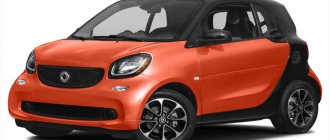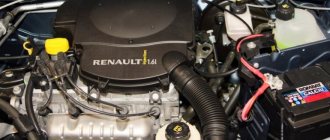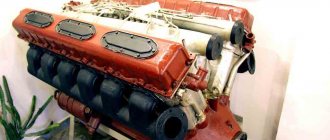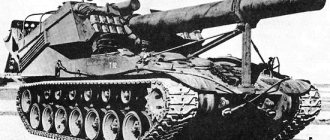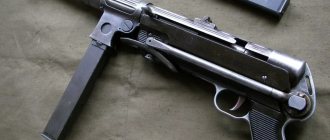Content
- A little about the characteristics
- What units are in the BMW 1 (I E87)
- Sores of the German “unit”
- Expenses
- Peculiarities
- What BMW 1 is hiding
The BMW 1 hatchback (I E87) was launched into production in 2004 and rolled off the assembly line in 2012. Today on the used car market these cars cost, on average, 500,000 rubles.
The BMW 1 is a small car. Externally and with technical characteristics, it stands out from a number of comfortable executive German cars of Bavarian production.
The feeling of driving a BMW 120d
BMW 120d with a power of 177 hp. With. accelerates to 100 km/h in 8.5 seconds, which is pretty good for such a small car with a modest engine. The car is good to drive, the gearbox is nimble, and quickly responds to pressing the gas pedal. The car has a German drive, although on a bad road the car can drift to the sides; it wobbles especially noticeably when driving along ruts. If desired, you can drift it.
Next is a test drive of the BMW 120d on video:
You can also read on this topic:
New Renault Duster 2015-2017 - The most complete test drive
New sports car Porsche 911 Turbo
Used Volvo S60 and features of its operation
Audi A6 allroad quattro - station wagon with off-road performance
Mercedes S63 in body 222 after 2 years of operation
Share on social networks
Alexander Stepanoff December 26, 2016
Published in: German cars
Tags: used cars, German cars, Economical
A little about the characteristics
The hatchback has the most sporty seating position, making it comfortable for even a six-foot driver to drive the car. The seats here have adjustable lateral support, and the steering wheel is small in diameter with a wide rim.
As for the rear seats, they are not designed for a comfortable ride. There is not much room in the back - both in height and in front.
The engine in the German “penny” is located slightly behind the front axle. The main feature of the hatchback is the even distribution of weight between the front and rear axles.
All this, together with rear-wheel drive, makes driving a car close to sports, comparable even to driving a go-kart. The compact car grips dry asphalt quite well. But when driving at high speeds and on wet surfaces it can feel uncontrollable.
Six airbags and ABS and DSC systems make the car safer.
What units are in the BMW 1 (I E87)
The BMW 1 (I E87) has a huge range of petrol and diesel engines:
- BMW 116i - 1.6 l, 115 hp, 5 manual transmission
- BMW 116i - 1.6 l, 115 hp, 6 manual transmission
- BMW 118d - 2.0l, 122 hp, 6 manual transmission,
- BMW 118i - 2.0 l, 129 hp, 5 manual transmission
- BMW 118i - 2.0 l, 129 hp, 6 automatic transmission
- BMW 118i - 2.0 l, 129 hp, 6 manual transmission
- BMW 120d - 2.0l, 163 hp, 6 manual transmission
- BMW 120d - 2.0l, 163 hp, 6 automatic transmission
- BMW 120i - 2.0 l, 150 hp, 6 manual transmission
- BMW 120i - 2.0 l, 150 hp, 6 automatic transmission
- BMW 130i - 3.0 l, 265 hp, 6 manual transmission
- BMW 130i - 3.0 l, 265 hp, 6 automatic transmission
The most optimal of the entire line is the 122-horsepower diesel engine. It has lower consumption with more vigorous acceleration and speed indicators. At the same time, it is quite reliable and does not require large investments.
Note that gasoline engines sell better, and Russian drivers have more confidence in them.
Transmission
Gearboxes, unlike engines, are more trouble-free. After 120,000 km. It's time to listen to the rear gearbox on cars with 6-cylinder engines. If a slight clicking sound appears during rapid acceleration, this means that the driveshaft flange nut has become loose and needs to be tightened properly. Approximately 150,000 km. The axle seals will last and hold oil. The cardan coupling, which costs 90 euros, will withstand the same mileage.
A manual transmission is installed on approximately 12% of cars; it is quite reliable and rarely needs to be repaired. Regardless of the engine, a manual transmission lasts a long time, perhaps after 160,000 km. you need to change the seals. But there are cases that after 200,000 km. you have to change the clutch, to do this you will need to remove the box. A clutch kit will cost about 300 euros, a non-original one can be found for 180. The clutch must be replaced immediately; the clutch must not be allowed to slip, because the 2-mass flywheel of the engine, which costs about 1000 euros for the original, may be damaged. Brake pads last 40,000 km. front and rear for 60,000 km. Discs usually withstand 2 pad changes.
The 2000 ZF 6HP19 automatic transmission may have problems. It is this box that is installed in cars with 1.6 and 2.0 engines produced in 2004. These transmissions do not like overheating and too low temperatures. Therefore, you should not start abruptly on an unheated box; the more powerful the motor, the more damage it will do to the box. In winter, it is advisable to warm up the automatic transmission before driving - turn on the drive and hold the car on the brakes.
The engineers made this box nimble and quick-firing - the torque converter locks are activated as early as possible, starting from first gear, thereby putting the gearbox under maximum tension. The clutches slip in traffic jams, and over time, wear products appear in the oil, so the oil quickly begins to age and needs to be changed in order for the gearbox to last longer. In general, bushings, clutches, torque converter, solenoids, and the entire valve body wear out quickly. It often happens that an automatic transmission requires overhaul after 120,000 km. mileage
In 2006, a new automatic transmission 6HP21 was released, in which the mechatronics were seriously improved, the valve plate, clutches and solenoids were changed. This box began to last longer - about 230,000 km. According to the regulations, the oil in it must be changed every 60,000 km. A signal that it is time to change the oil immediately will be shocks or vibrations. Also, you need to monitor whether leaks appear, because in winter the solenoid block gasket may freeze. After about 4 years, the block seal may become leaky.
In the same 2006, in addition to the German gearbox, they began to install the American GM 6L45/6L50 automatic gearbox. It is rarely found anywhere; it is usually found in cars with 2-liter gasoline engines with a power of 150 and 156 hp. With. and 3 liter engines. With this automatic transmission there is even less hassle than in the German one. It can fail if you frequently drive at top speed because the rotary oil pump does not always withstand it, especially on cars manufactured before 2008. And the hydraulic units themselves can last at least 250,000 km; the oil must be changed every 90,000 km. But it’s better to take a car after 2010, when this box was modernized.
But you still need to monitor the “donut” of the torque converter, because after 150,000 km. its hub wears out, this will be indicated by the oil seal, which suddenly begins to leak.
Sores of the German “unit”
“Kopeykas” from Germany do not tolerate the Russian winter well. Often, after parking in the cold, the car does not start immediately. On four-cylinder cars, 1.6 liters have two cylinders.
On BMW 1 (I E87), the doors freeze periodically - both front and rear. It is impossible to get into the car after a night on a cold street. Therefore, it is better for the German woman to spend the night in the garage.
Russian roads are another problem for the BMW 1 (I E87). She has low ground clearance. The hatchback drives very well on the highway and holds the road well. But small potholes and speed bumps are already a test for the low BMW 1.
With a mileage of over two hundred thousand km, the rear gearbox may require replacement. The rear and front struts (the cost of each is about 8,000 rubles) also require periodic replacement.
The “unit” has a capricious battery. It may require replacement, which will cost more than 20,000 rubles + delivery and installation costs.
Finding spare parts for BMW 1 is sometimes not easy. Servicing Bavarian cars is expensive. But installing original spare parts on your car helps you forget about any problems for a long time.
How much oil to fill in a BMW 1 Series engine
First generation E87 2004-2011
The BMW 1 Series in 2004 became the ideological successor to the 3 Series Compact hatchback. The car had a three- and five-door body depending on the version (E81 and E87, respectively). In 2007-2008 The 1-Series line has expanded to include a coupe and convertible. The hatchback of the same name received 1.6 and 2.0 liter gasoline engines (115-170 hp), as well as a top-end 3.0 V6 with a power of 258-265 hp. With. The diesel family included two-liter engines of varying power (116-204 hp). Power plants were coupled with manual or automatic transmission. The small-scale “charged” version of the M Coupe had a three-liter V6 3.0 under the hood, boosted to 340 hp. With. But this engine only worked with manual transmission 6. The total production volume of such machines was 6.5 thousand copies. In 2007 and 2011, the first generation 1-Series was modernized. There were several months left before the release of the successor.
Also read: Engine oil for Nissan Maxima engine
Gasoline engines 2004-2011
- 1.6 N40/N45, oil volume – 4.25 liters, tolerance and viscosity: API-SJ, SH, SJ, SL; SAE 10W-40, 10W-30, 0W-30, 0W-40, 5W-30, 5W-40
- 2.0 M47TU2, oil volume - 5.5 liters, tolerance and viscosity: API-SJ, SH, SJ, SL; SAE 10W-40, 10W-30, 0W-30, 0W-40, 5W-30, 5W-40
- 3.0 N54/N54T, oil volume - 6.5 liters, tolerance and viscosity: API-SJ, SH, SJ, SL; SAE 10W-40, 10W-30, 0W-30, 0W-40, 5W-30, 5W-40
Diesel engines 2004-2011
2.0 N47D20B, oil volume - 5.2 liters, tolerance and viscosity: API-CH, CH-4; SAE 10W-40, 10w-40, 5W-30, 5W-40, 0W-40, 0w-30
Second generation F20 2011-2020
The 1 Series hatchback in the F20 body is based on an updated rear-wheel drive platform borrowed from its predecessor. Actually, this can explain the cosmetic changes in the design of the exterior and interior - the second generation is almost similar in design and appearance to the previous model. In particular, the car received a similar MacPherson front suspension, but with modified geometry and the addition of aluminum alloys. This solution made it possible to reduce weight, improve handling and reduce fuel consumption. At the same time, the rigidity of the body was increased, and BMW engineers installed lightweight silent blocks in the front and rear. As a result, we managed to achieve an ideal weight distribution along the axles of 50:50. Three types of steering gear have become available: with electromechanical power steering, as well as Servotronic and Variable Sport Steering. The aerodynamic drag coefficient of the body was 0.32 (previously it was 0.35). The most expensive version of the 1-Series F20, the M135i, was equipped with a 320-horsepower three-liter V6, manual transmission or automatic transmission, as well as rear-wheel drive or all-wheel drive.
Gasoline engines 2011-2013
- 1.6 N13B16A, oil volume - 4.2 liters, tolerance and viscosity: API-SM, SN; SAE 10W-40, 10W-30, 0W-30, 0W-40, 5W-30, 5W-40
- 2.0 N47, oil volume - 5.2 liters, tolerance and viscosity: API-SM, SN; SAE 10W-40, 10W-30, 0W-30, 0W-40, 5W-30, 5W-40
- 2.0 N47S, oil volume - 5.2 liters, tolerance and viscosity: API-SM, SN; SAE 10W-40, 10W-30, 0W-30, 0W-40, 5W-30, 5W-40
- 3.0 N52B30, oil volume - 6.5 liters, tolerance and viscosity: API-SM, SN; SAE 10W-40, 10W-30, 0W-30, 0W-40, 5W-30, 5W-40
- 3.0 N55B30, oil volume - 6.5 liters, tolerance and viscosity: API-SM, SN; SAE 10W-40, 10W-30, 0W-30, 0W-40, 5W-30, 5W-40
Also read: Engine oil for Audi A5 engine
Diesel engines 2011-2013
2.0 N47D20D, oil volume - 5.2 liters, tolerance and viscosity: API-CI-4, CJ, CJ-4; SAE 5W-40, 10W-40, 10W-30, 5W-30, 0W-30, 0W-40
Peculiarities
The BMW 1 (I E87) has several nuances “for everyone.” Low ground clearance is one of these features. Although, given the average condition of roads in Russia, the attitude towards this point is quite unambiguous. And this is rather a disadvantage than a plus. Although this makes the car look more interesting.
Many girls, apparently due to the size of the car, consider it feminine. They buy it and then complain that there is nowhere to put the child - there is very little space in the back. Indeed, there is no space in the rear seats. But this is due to the technical characteristics and high maneuverability of the compact hatchback, which does not pretend to be a family car.
For the same reason, there is little space in the trunk of the BMW 1. Although it is freed up due to the absence of a spare wheel in it. But this also becomes a problem for some. Run-flat tires solve the problem of running out of spare tires. But finding such tires is problematic.
The suspension on the BMW 1 may seem too rough and harsh. But the way the car drives, the way it takes turns, justifies everything.
What oil to use for a BMW 1 Series engine
Original
The manufacturer of the BMW 1-Series recommends branded motor oil with original LongLife 01 or 04 approvals. The LL-01 standard was adopted in 2001 and is considered less relevant in comparison with LL 04, introduced in 2004. However, for Russian operating conditions, the manufacturer recommends LL 01 for gasoline engines and LL 04 for diesel modifications of the BMW 1-Series. As for the SAE viscosity type, one must proceed solely from the temperature conditions in which the car is used most of the time. For example, for winter driving a viscosity of 0W-40, 0W-30 or 5W-30 is recommended, and for summer use 20W-40 or 25W-50 is suitable. If the car drives all year round, then you should opt for all-season oil with fluidity SAE 10W-40, 10W-30 or 5W-40.
Unoriginal
When choosing an analogue oil for a BMW 1-Series engine, car owners pay attention primarily to proven brands Kixx, Shell, Castrol, Liqui Moly, Valvoline, Mannol, Mobil, etc. In addition, it is necessary to take into account the appropriate API approval when selecting which must be based on the year of manufacture of the car and the type of engine. For example, for a gasoline BMW 1-Series E87 2004. (first generation) suitable motor oil will be all-season semi-synthetic with parameters SAE 10W-30 and API-SJ. for diesel modifications - API-CH. As for later gasoline cars released in 2007, API-SL semi-synthetic oil is suitable in this case. For diesel engines – API-CH-4. Next, we will determine the suitable engine oil for the second generation BMW 1-Series (F20). So, for older gasoline cars (for example, 2014), all-season semi-synthetic 10W-40 with API-SM approval is recommended, and for diesel engines - API - CI-4. For more recent gasoline hatchbacks of the 2021 model, pure synthetics with API-SN approval should be used. For diesel engines - API-CJ or CJ-4. Below are the best analogue engine oils for the BMW 1-Series.
Also read: Engine oil for Volkswagen Multivan engine
According to approval LL-01 for gasoline engines:
- Motul 8100 X-Cess 5W-40 art 104256; 102784
- Shell Helix Ultra 5W-40 art 55004754; 55004755
- Mobil Super 3000 X1 5W-40 art 152666; 152567
- Liqui Moly Leichtlauf HT 5W-40 art 8029; 8028
According to LL04 approval for diesel engines:
- Motul Specific LL-04 5W-40 art 101274
- Liqui Moly Longtime HT 5W-30 art 7537
- Motul 8100 X-Clean 5W-40 art 102051
- Alpine RSL 5W-30 LA art 0100302.
